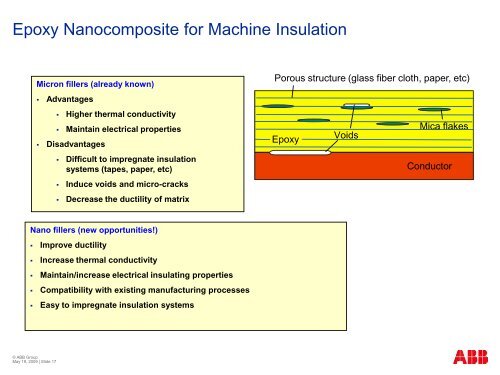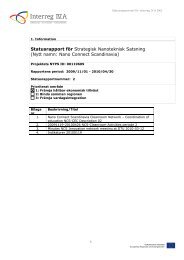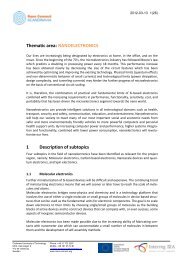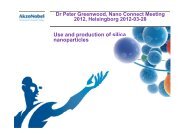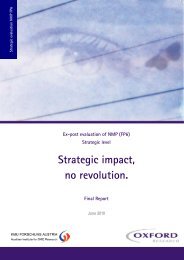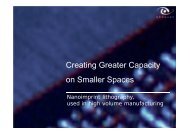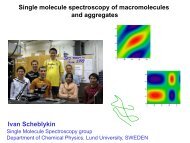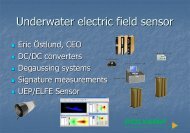Polymer nanocomposites as electrical insulation in high voltage ...
Polymer nanocomposites as electrical insulation in high voltage ...
Polymer nanocomposites as electrical insulation in high voltage ...
You also want an ePaper? Increase the reach of your titles
YUMPU automatically turns print PDFs into web optimized ePapers that Google loves.
Epoxy Nanocomposite for Mach<strong>in</strong>e Insulation<br />
Micron fillers (already known)<br />
• Advantages<br />
• Higher thermal conductivity<br />
• Ma<strong>in</strong>ta<strong>in</strong> <strong>electrical</strong> properties<br />
• Disadvantages<br />
• Difficult to impregnate <strong><strong>in</strong>sulation</strong><br />
systems (tapes, paper, etc)<br />
• Induce voids and micro-cracks<br />
• Decre<strong>as</strong>e the ductility of matrix<br />
Porous structure (gl<strong>as</strong>s fiber cloth, paper, etc)<br />
Mica flakes<br />
Epoxy<br />
Voids<br />
Conductor<br />
Nano fillers (new opportunities!)<br />
• Improve ductility<br />
• Incre<strong>as</strong>e thermal conductivity<br />
• Ma<strong>in</strong>ta<strong>in</strong>/<strong>in</strong>cre<strong>as</strong>e <strong>electrical</strong> <strong>in</strong>sulat<strong>in</strong>g properties<br />
• Compatibility with exist<strong>in</strong>g manufactur<strong>in</strong>g processes<br />
• E<strong>as</strong>y to impregnate <strong><strong>in</strong>sulation</strong> systems<br />
© ABB Group<br />
May 19, 2009 | Slide 17


